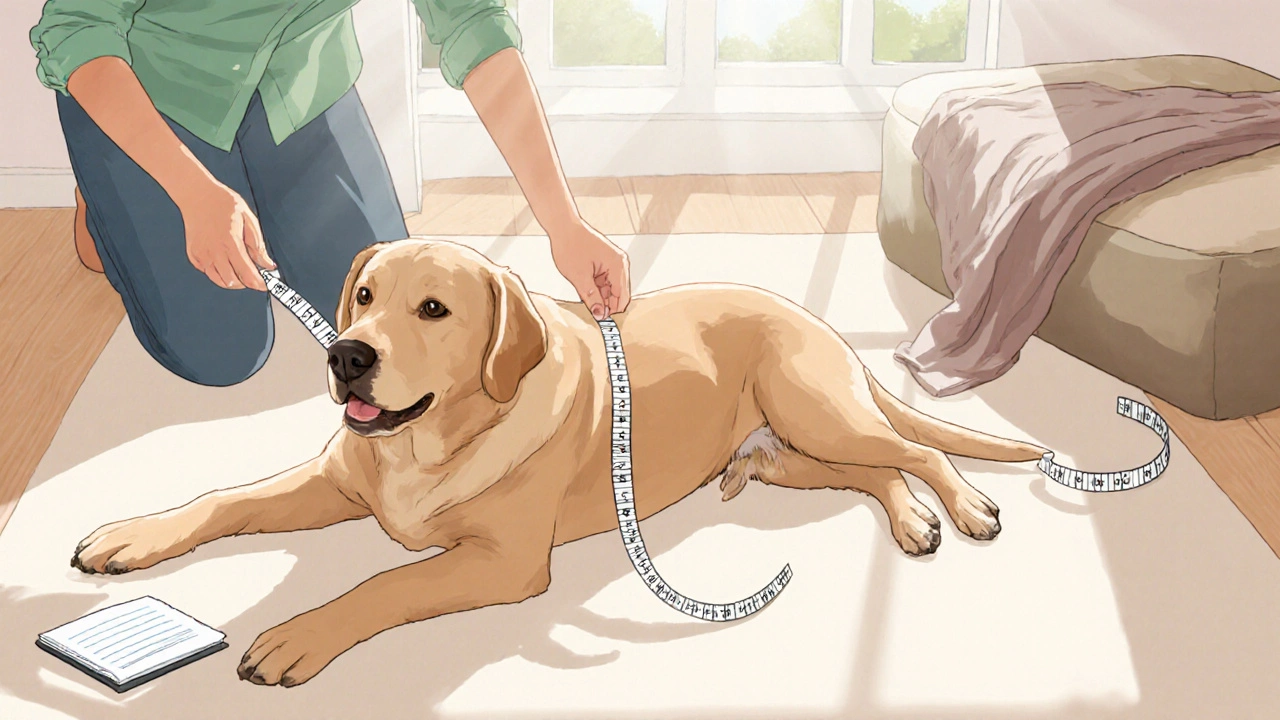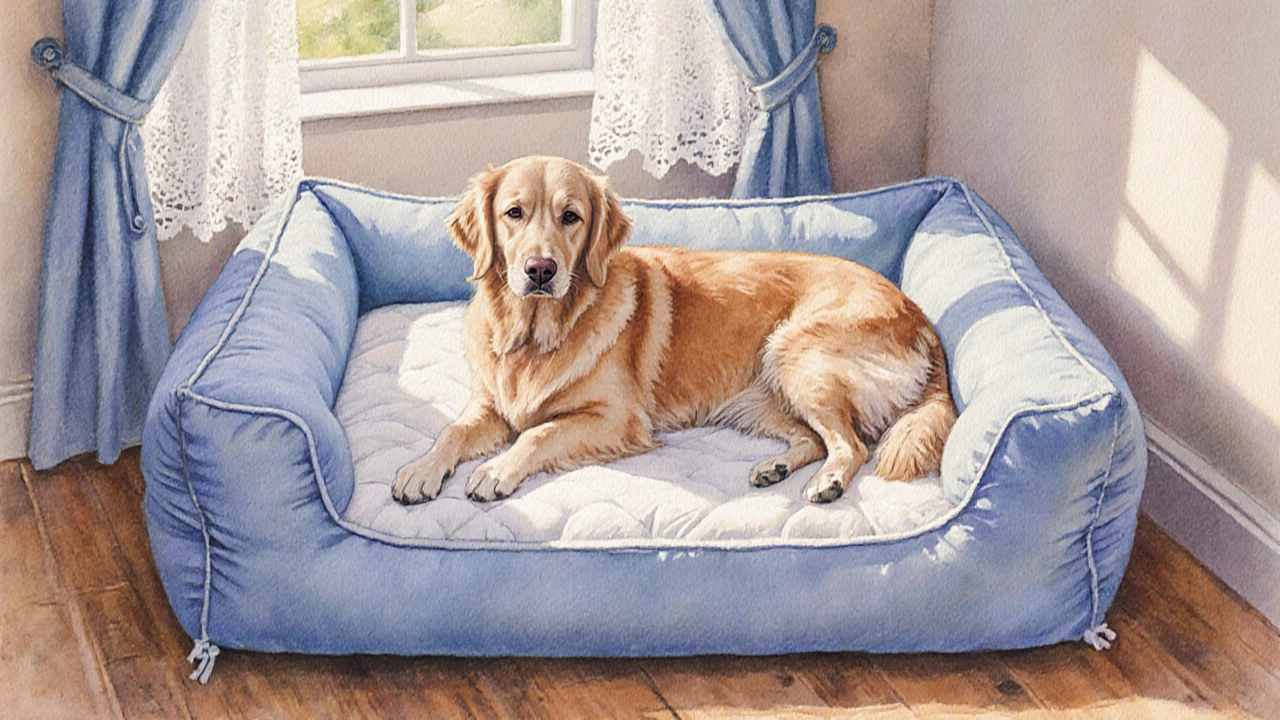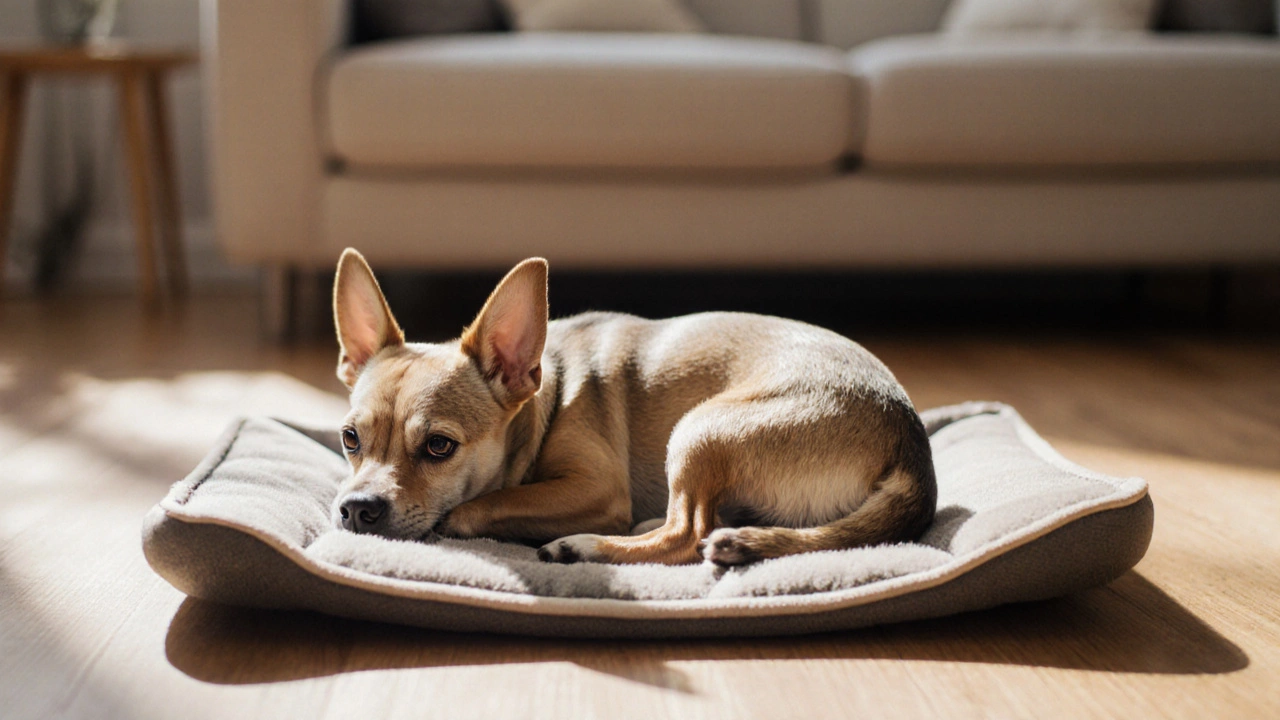Dog Bed Size Calculator
Your Dog's Measurements
Key Recommendations
Great for: All breeds that need room to stretch
• Prevents joint pressure points
• Reduces risk of arthritis
• Supports natural sleeping positions
Warning: Beds too large may cause insecurity or rolling off during sleep.
Recommended Bed Size
Special Considerations
When it comes to a Dog Bed a dedicated sleeping surface designed for dogs to rest comfortably, size matters more than you might think. A bed that's too small can cramp a pup’s joints, while one that's overly large may feel like a cold, empty slab. In this guide we’ll break down why a dog bed size should generally be a bit bigger than the animal itself, how to measure the right dimensions, and which special features matter for different breeds and ages.
Why Size Matters for Your Dog’s Health
Dogs sleep up to 18 hours a day, especially when they’re puppies or seniors. A properly sized bed supports key aspects of Joint Health the condition of a dog’s bones, cartilage, and supporting ligaments. When a dog curls up tightly against the edges of a cramped bed, pressure points develop, which over time can accelerate arthritis or cause muscle strain.
Conversely, a bed that’s much larger than needed can lead to a dog rolling off during the night, reducing the restorative quality of sleep. The ideal balance is a bed that lets the dog stretch out fully while still feeling enclosed enough to feel safe.
How to Measure Your Dog for the Perfect Bed
Step‑by‑step, here’s a quick way to get accurate measurements:
- Have your dog lie down on a flat surface.
- Measure the length from the tip of the nose to the base of the tail (excluding the tail itself). Add about 2‑3 inches to allow for stretching.
- Measure the width across the shoulders or the widest part of the ribcage. Again, add 2‑3 inches.
- If your dog prefers to lie on its side, take the length from nose to the end of the rear paws and add extra space.
These numbers give you a baseline. Most manufacturers list bed dimensions in inches, so convert centimeters if needed (1 inch = 2.54 cm).
Weight Categories and Recommended Bed Sizes
While length and width are useful, many owners find it easier to start with the dog’s weight. Below is a quick reference that matches common weight brackets with a Size Guide a chart that pairs dog weight with suggested bed dimensions. These are general recommendations; always adjust based on your dog’s specific body shape.
| Weight (kg) | Typical Breed Examples | Suggested Bed Size (inches) |
|---|---|---|
| 0‑5 | Chihuahua, Pomeranian | 20 × 15 |
| 5‑15 | Cocker Spaniel, Beagle | 30 × 20 |
| 15‑30 | Labrador, Border Collie | 40 × 30 |
| 30‑50 | German Shepherd, Golden Retriever | 50 × 35 |
| 50‑80 | Rottweiler, Mastiff | 60 × 40 |
| 80+ | Great Dane, Saint Bernard | 80 × 50 |
Notice that the bed width is usually 1½‑2 times the dog’s shoulder width. This cushion around the sides gives the animal room to shift without falling off.

Specialty Beds: Orthopedic and Memory Foam Options
If your dog is a senior or a large‑breed prone to joint issues, an Orthopedic Dog Bed a bed designed with supportive foam layers to reduce pressure on joints can make a big difference. These beds typically use high‑density foam that retains shape for years.
Another popular material is Memory Foam viscoelastic foam that conforms to the body’s contours. Memory foam beds are especially good for dogs that sleep on their side because the material cradles the entire torso.
Both orthopedics and memory foam tend to be more expensive, but they often come with a longer lifespan and health benefits that outweigh the cost for dogs with arthritis, hip dysplasia, or chronic soreness.
Breed‑Specific Considerations
Not all breeds have the same sleeping habits. Breed a distinct group of dogs with shared physical traits and temperament influences both size and preferred sleeping position.
- Grayhounds love to stretch out flat. A longer bed (up to 60 inches) prevents them from feeling cramped.
- Bullmastiffs often prefer a raised edge they can lean against, so a bed with bolsters works well.
- Small terriers may feel insecure in a huge open space; a bed with a cozy, enclosed shape can calm them.
Understanding these nuances helps you pick not just the right dimensions but also the right style.
Common Mistakes and How to Avoid Them
Many pet parents try to save money by buying a bed that’s too small, thinking a dog will simply curl up. Here’s what usually goes wrong:
- Cramping the spine. Dogs that can’t fully extend their bodies may develop back tension.
- Inadequate insulation. A thin pad may not protect joints on hardwood floors, especially for older dogs.
- Wrong shape. A rectangular bed works for most, but a round mat may cause a dog to roll off.
Choose a bed that matches both the dog’s size and the floor surface. Adding a washable cover can improve comfort and hygiene.

Tips for Choosing the Right Size Dog Bed
- Start with the weight‑based Size Guide above, then fine‑tune using actual measurements.
- Leave at least a few inches of breathing room on each side.
- If your dog switches between stretched and curled positions, opt for the larger of the two dimensions.
- Consider a bed with removable, washable cover-especially for dogs that shed or have accidents.
- Read reviews that mention “supports joints” and “no slipping” to gauge real‑world performance.
Following these steps reduces the guesswork and helps you invest in a bed that truly benefits your pet.
Maintenance and Longevity
Even the best‑sized bed will lose its shape if neglected. Here’s a quick care routine:
- Vacuum the surface weekly to remove hair and debris.
- Spot‑clean stains with a mild pet‑safe detergent.
- Wash removable covers according to the manufacturer’s temperature guidelines (usually 30 °C or 86 °F).
- Rotate the bed every few months to prevent uneven compression.
Regular upkeep not only extends the life of the foam but also keeps your dog’s sleeping environment hygienic.
Frequently Asked Questions
Should a dog bed be exactly the same length as my dog?
No. Add at least 2‑3 inches so the dog can fully stretch without hitting the edge.
Is a bigger bed always better?
A larger bed is helpful up to a point. If it’s too big, the dog may feel insecure and may roll off, especially on smooth floors.
Do I need a special bed for senior dogs?
Senior dogs benefit from orthopaedic or memory‑foam beds that cushion joints and reduce pressure points.
How often should I replace my dog’s bed?
Most high‑quality foam beds last 3‑5 years. Replace when you notice permanent sagging or loss of support.
Can I use a human mattress for my dog?
You can, but a dedicated dog bed offers the right balance of size, edge support, and washable covers designed for pets.
By measuring correctly, understanding your dog’s breed traits, and choosing a bed with the right material, you’ll give your furry friend a safe, comfy spot that’s just the right size.

